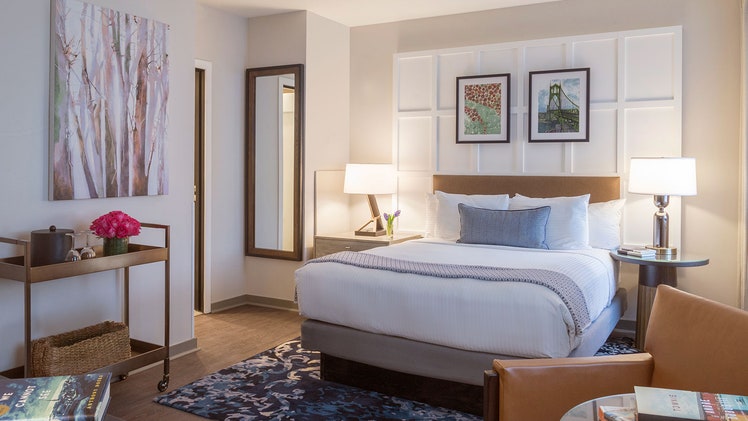Review: Forest Park
Photos

Amenities
We're thinking about a nature outing. Set the scene for us.
Defining the Portland skyline, this nearly 5,200-acre expanse of deep, dense, Pacific Northwest forest—one of the largest urban green spaces in the country—is criss-crossed with more than 80 miles of spectacular scenic trails and forest roads, so you can hike, bike, run, and walk to your as far as you like, all without ever leaving the city limits. Fun fact: Although the park wasn’t officially established until 1948, the idea of preserving the space as a “forest park” was originally proposed in 1903 by landscape architects John and Frederick Olmsted—sons of Frederick Law Olmsted, co-designer of New York's Central Park—who were hired to help design rapidly growing Portland’s master park plan.
What kinds of trails will we find around the park?
For a half-day trek with serious views and a delicious ending, start at Lower Macleay Park, take the Lower Macleay Trail until it intersects with the 30-mile Wildwood Trail, then continue up to the historic Pittock Mansion for a picnic on the beautiful back lawn. If you’re more in the market for a half-hour hike, but still want the full forest effect, take the Lower Macleay Trail through the cool, quiet canyon as far as the famous/infamous Stone House—a.k.a. the Witch’s Castle—a crumbling, moss-shrouded former rest stop built by the city in the 1930s. Even on this short trip, there’s plenty to see; keep an eye out for the city’s largest Douglas Fir, a 242-foot arborists’ wonder, Balch Creek’s coastal cutthroat trout and giant salamanders, and a whole host of native foliage, from lush licorice ferns to salmonberry bushes.
How easy is it to navigate all that nature?
Trail markers are relatively clear as you meander through canyons, follow babbling Balch Creek, and cross major roads like NW Cornell and Burnside, but for best results, download a map or purchase a guide from the Forest Park Conservancy or at Powell’s.





